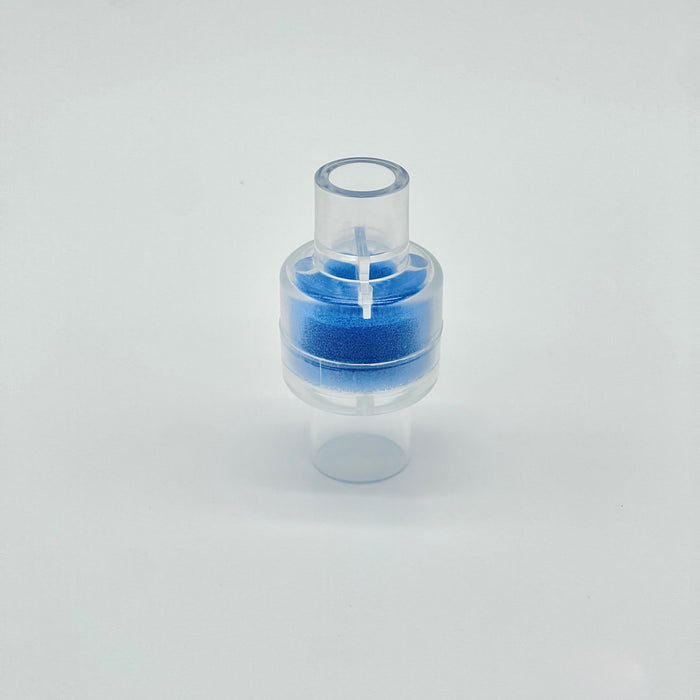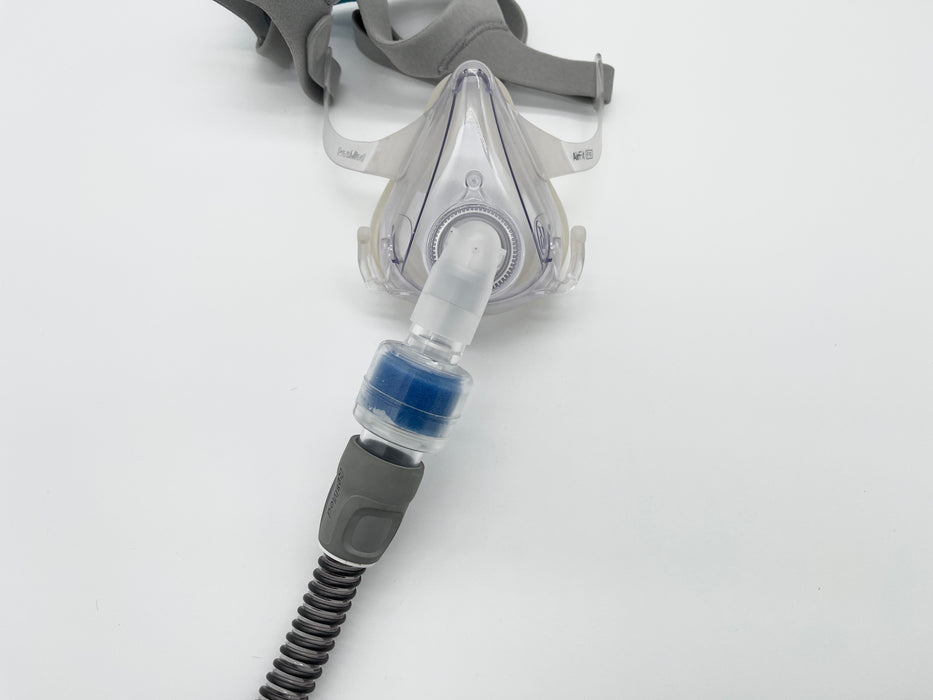Using your built in humidifier will drain any battery very quickly. But if you'd like humidification, we will include a FREE Heat Moisture Exchanger! Simply add it to the cart with any battery purchase and it will be included.
The Heat Moisture Exchanger (HME) for CPAP Machines offers a waterless humidification alternative to the traditional humidifier used during CPAP therapy. This HME uses the humidity from your exhaled breath and recirculates when you breathe in to help alleviate dryness. If humidification is needed when using an EXP PRO battery either at home or off-grid, this is a good lightweight, inexpensive option to maximize battery run time.
This HME Universal and is good for three (3) nights of use. Connect the HME between your mask (at the elbow) and hose. The HME is disposable and cannot be cleaned. The HME will work with any CPAP mask that doesn’t have a short tube. A “short tube” is about six inches to one foot long and extends out and away from the mask, giving you a little extra slack for extra movement. Examples of masks that use a short tube include the AirFit P10 and the AirFit N20.
Manufactured in the USA.
Features and Benefits:
- Extremely Portable (Perfect for Travel)
- Comfortable Sleep Therapy Anywhere
- Works With Almost Any CPAP Machine
- Compatible With Most CPAP Masks
Using a Heat Moisture Exchanger (HME) with continuous positive airway pressure (CPAP) instead of a humidifier is a common practice in some situations, but it's important to consider the benefits and limitations of both options.
A Heat Moisture Exchanger (HME) is a device that captures moisture from the patient's exhaled breath and returns it to the inhaled air. It helps to reduce the drying effect of the CPAP therapy and may provide some level of humidity to the patient. Here are some factors to consider when using an HME with CPAP:
-
Portability: HMEs are smaller and more portable than traditional water-based humidifiers. This can be an advantage for patients who need to travel or use CPAP in situations where a traditional humidifier may be impractical.
-
Reducing Condensation: An HME can help prevent condensation in the tubing and mask, which can be an issue with CPAP therapy. This can improve comfort and reduce the risk of rainout (condensation accumulating in the tubing).
-
Cost: HMEs are typically more cost-effective in the long run because they don't require the ongoing expense of distilled water or other consumables.
However, there are some limitations to using an HME with CPAP:
-
Limited Humidification: While HMEs provide some moisture, they may not offer the same level of humidity as a dedicated CPAP humidifier. Patients with significant dryness or irritation may still benefit from a traditional humidifier.
-
Compatibility: Not all CPAP machines are compatible with HMEs. Some machines are designed to work with specific HMEs, and the use of an incompatible HME can affect therapy effectiveness.
-
Specific Medical Conditions: Patients with specific medical conditions, such as severe dry mouth or severe dry eye, may not find HMEs sufficient to address their humidity needs.
-
Maintenance: HMEs need to be replaced regularly to maintain their effectiveness. This can add to the long-term cost.
Ultimately, the choice between using an HME or a humidifier with CPAP should be made in consultation with a healthcare provider. They can help determine the best option based on the patient's specific needs, comfort, and any underlying medical conditions. Some individuals may find that HMEs are suitable for their CPAP therapy, while others may prefer the added humidity provided by a dedicated CPAP humidifier.


